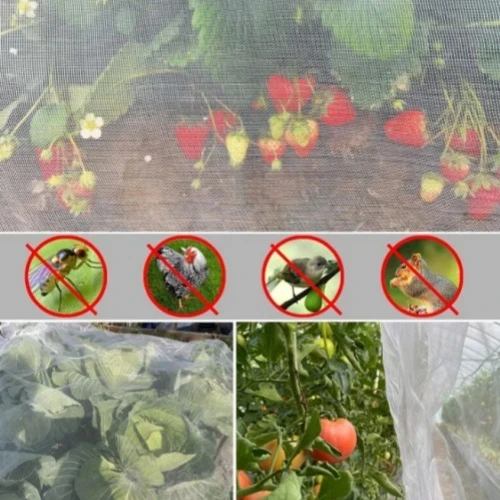-
 Afrikaans
Afrikaans -
 Albanian
Albanian -
 Amharic
Amharic -
 Arabic
Arabic -
 Armenian
Armenian -
 Azerbaijani
Azerbaijani -
 Basque
Basque -
 Belarusian
Belarusian -
 Bengali
Bengali -
 Bosnian
Bosnian -
 Bulgarian
Bulgarian -
 Catalan
Catalan -
 Cebuano
Cebuano -
 China
China -
 Corsican
Corsican -
 Croatian
Croatian -
 Czech
Czech -
 Danish
Danish -
 Dutch
Dutch -
 English
English -
 Esperanto
Esperanto -
 Estonian
Estonian -
 Finnish
Finnish -
 French
French -
 Frisian
Frisian -
 Galician
Galician -
 Georgian
Georgian -
 German
German -
 Greek
Greek -
 Gujarati
Gujarati -
 Haitian Creole
Haitian Creole -
 hausa
hausa -
 hawaiian
hawaiian -
 Hebrew
Hebrew -
 Hindi
Hindi -
 Miao
Miao -
 Hungarian
Hungarian -
 Icelandic
Icelandic -
 igbo
igbo -
 Indonesian
Indonesian -
 irish
irish -
 Italian
Italian -
 Japanese
Japanese -
 Javanese
Javanese -
 Kannada
Kannada -
 kazakh
kazakh -
 Khmer
Khmer -
 Rwandese
Rwandese -
 Korean
Korean -
 Kurdish
Kurdish -
 Kyrgyz
Kyrgyz -
 Lao
Lao -
 Latin
Latin -
 Latvian
Latvian -
 Lithuanian
Lithuanian -
 Luxembourgish
Luxembourgish -
 Macedonian
Macedonian -
 Malgashi
Malgashi -
 Malay
Malay -
 Malayalam
Malayalam -
 Maltese
Maltese -
 Maori
Maori -
 Marathi
Marathi -
 Mongolian
Mongolian -
 Myanmar
Myanmar -
 Nepali
Nepali -
 Norwegian
Norwegian -
 Norwegian
Norwegian -
 Occitan
Occitan -
 Pashto
Pashto -
 Persian
Persian -
 Polish
Polish -
 Portuguese
Portuguese -
 Punjabi
Punjabi -
 Romanian
Romanian -
 Russian
Russian -
 Samoan
Samoan -
 Scottish Gaelic
Scottish Gaelic -
 Serbian
Serbian -
 Sesotho
Sesotho -
 Shona
Shona -
 Sindhi
Sindhi -
 Sinhala
Sinhala -
 Slovak
Slovak -
 Slovenian
Slovenian -
 Somali
Somali -
 Spanish
Spanish -
 Sundanese
Sundanese -
 Swahili
Swahili -
 Swedish
Swedish -
 Tagalog
Tagalog -
 Tajik
Tajik -
 Tamil
Tamil -
 Tatar
Tatar -
 Telugu
Telugu -
 Thai
Thai -
 Turkish
Turkish -
 Turkmen
Turkmen -
 Ukrainian
Ukrainian -
 Urdu
Urdu -
 Uighur
Uighur -
 Uzbek
Uzbek -
 Vietnamese
Vietnamese -
 Welsh
Welsh -
 Bantu
Bantu -
 Yiddish
Yiddish -
 Yoruba
Yoruba -
 Zulu
Zulu
Exploring the Benefits of Shade Nets for Sustainable Farming Practices
The Importance of Shade Nets in Agriculture
In recent years, the agricultural industry has faced numerous challenges, including extreme weather conditions, pests, and diminishing water resources. Farmers are constantly seeking innovative solutions to enhance crop yield and quality while minimizing costs and environmental impact. One of the most effective and sustainable methods gaining popularity is the use of shade nets.
Shade nets, also known as shade cloths, are protective coverings made from woven or knitted materials that block a certain percentage of sunlight. They are available in various densities, allowing farmers to select the appropriate level of shade for their specific crops. Typically, shade nets can block anywhere from 30% to 90% of sunlight, thus adapting to the needs of different plants across various growth stages.
The Importance of Shade Nets in Agriculture
Additionally, shade nets play a crucial role in protecting crops from pests and diseases. Many pests thrive in direct sunlight, and by providing a shaded environment, farmers can deter these harmful insects. Moreover, shade nets can prevent birds and other animals from damaging the crops, further safeguarding the harvest. Reducing the reliance on chemical pesticides not only lowers production costs but also promotes a healthier ecosystem.
farm shade net

Aside from protecting against pests and the sun, shade nets also serve to filter harmful ultraviolet (UV) rays. Prolonged exposure to these rays can damage plant tissues, leading to sunburned leaves and, ultimately, decreased yield. By utilizing shade nets, farmers can ensure a safer growing environment for their crops and reduce instances of sun damage.
Another significant advantage of shade nets is their contribution to improved microclimates. By creating a controlled environment, shade nets can increase humidity levels and reduce wind speed, thereby providing a more favorable atmosphere for plant growth. Some crops, such as tomatoes, peppers, and certain leafy greens, thrive in these microclimates, resulting in better quality produce and longer harvest seasons.
Moreover, the use of shade nets can extend the growing season for various crops. In regions with harsh winters or extreme summer temperatures, shade nets can create a conducive environment for seedlings, enabling farmers to start planting earlier in the spring or continue harvesting later into the fall. This flexibility can significantly enhance productivity and profitability.
In conclusion, the implementation of shade nets in agriculture presents a myriad of benefits for farmers and the environment alike. By providing protection from excessive sunlight, pests, and diseases, shade nets foster healthier crops and promote sustainable farming practices. The ability to create a controlled microclimate enhances the growing potential and extends the harvesting seasons, paving the way for better yields and increased agricultural efficiency. As climate change continues to impact traditional farming methods, shade nets stand as an innovative solution that can help farmers adapt to evolving agricultural challenges. Embracing this technology is a step towards a more resilient and sustainable future for agriculture.
-
Shipping Plastic Bags for Every NeedNewsJul.24,2025
-
Safety Netting: Your Shield in ConstructionNewsJul.24,2025
-
Plastic Mesh Netting for Everyday UseNewsJul.24,2025
-
Nylon Netting for Every UseNewsJul.24,2025
-
Mesh Breeder Box for Fish TanksNewsJul.24,2025
-
Expanded Steel Mesh Offers Durable VersatilityNewsJul.24,2025











